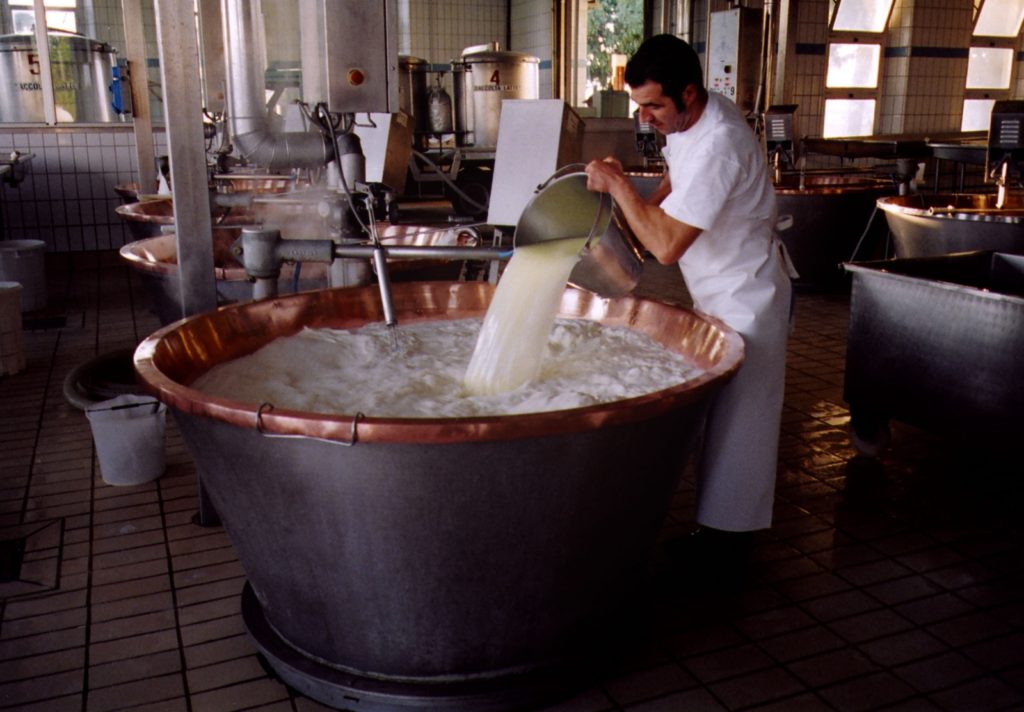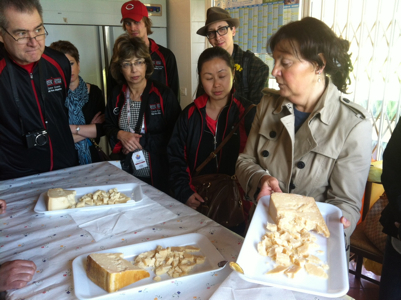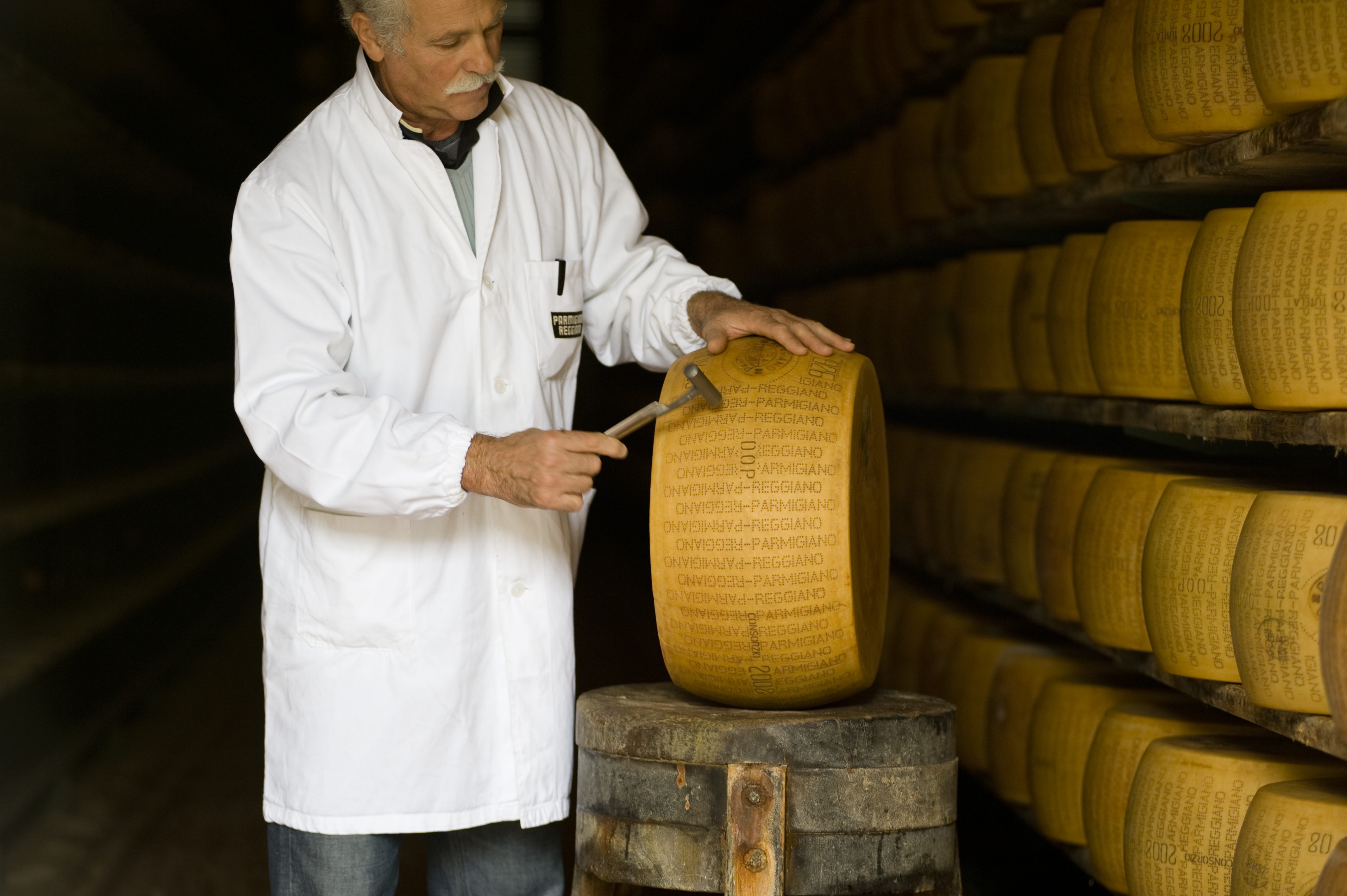You may have heard that Parmigiano-Reggiano is the good stuff. But what defines it? Over 300 factories in Parma, Reggio Emilia, Modena and part of Mantova and Bologna make it. And with so many hands in the cheese, how does the quality stay consistent? It's more than just the region that it's from that defines a cheese as Parmigiano-Reggiano. The factories that make it must follow a set of standards laid out by a cheese consortium (an association of businesses), which looks after maintaining the quality the product. Furthermore, the final product is inspected before it can bear the name Parmigiano-Reggiano and the letters D.O.P. (Domination of Protected Origin).
The 800-year-old method

Each wheel of Parmigiano-Reggiano must contain only three ingredients: raw cow’s milk, sea salt and calf rennet (an enzyme from the stomach of calves to curd the milk).There is no wax on the outside and no additives anywhere, except for the world’s oldest preservative – salt. The milk may only come from cows which have been fed grass from the region.
The raw milk is cooked in large vats between 129 and 131 degrees Fahrenheit, at the discretion of the master cheese maker who adapts the cooking method to the variation in each day’s milk. It’s cooled into the shape of the mold and then set in a brine bath. After a month, the cheese is moved to the shelves to allow the salt to penetrate to the center of the wheel. Each day, every wheel must be dusted and flipped over to keep mold from forming. After one year, the Parmigiano-Reggiano consortium performs a density test by tapping with a small metal hammer and listening for inconsistencies. Once approved, the cheese can carry the official stamp of D.O.P. See the whole process in an official video produced by the Parmigiano-Reggiano consortium here.
What’s real Parmesan cheese like?

Real Parmigiano-Reggiano cheese is embedded with small crystals where the naturally occurring amino acid tyrosine has linked together during the aging process. It has an unmistakable flaky texture and a milky aroma. It can be aged between one to three years, in which each consecutive year it develops more protein deposits and a stronger flavor. In the picture to the right, PMQ Pizza Magazine and the U.S. Pizza Team learn about the three different levels of maturation. After one year, Parmigiano-Reggiano is softer and used just for straight eating in pieces. After two years, it is most versatile, ideal for either eating directly or grating. After three years, it is mostly used for grating, since it is a bit harder and robustly flavored.
What about Grana Padano?
Grana Padano has many similarities to Parmigiano-Reggiano. They are both produced using fresh, raw cow's milk from the North of Italy (Parmigiano-Reggiano has a more limited area), they are cooked and set into molds in a similar way and both undergo the tapping test to check for defects. Some differences include that the cows whose milk is used to produce Grana Padano are able to eat more than just grass from the region. The D.O.P. specifications also permit them to eat peas, corn and millet. The cheese can also be sold as fully ready-to-eat Grana after just nine months, whereas Parmigiano-Reggiano is aged for a minimum of 12 months.
Parmigiano-Reggiano in your store
Parmigiano-Reggiano is costly to get in the United States, and with so many imitations at a fraction of the price, it may not be worth it, depending on your style of pizzeria. This is not a cheese to leave haphazardly on the table. If you have servers at your pizzeria, they can come by and grate the cheese on for the customer as they might with freshly grated pepper. Otherwise, Parmigiano-Reggiano may be used for a cheese plate appetizer. If you market your pizza as a gourmet product with authentic Italian ingredients, then the D.O.P. Parmigiano-Reggiano is a must. If you’re not sure if you’ve tried real Parmigiano-Reggiano before, go get a small hunk from your local supermarket. Chunk it by stabbing it with a cheese knife, or grate it onto soups, veggies or pastas just before serving. Buon appetito!















